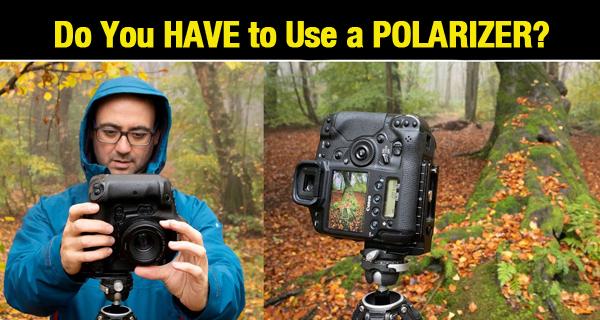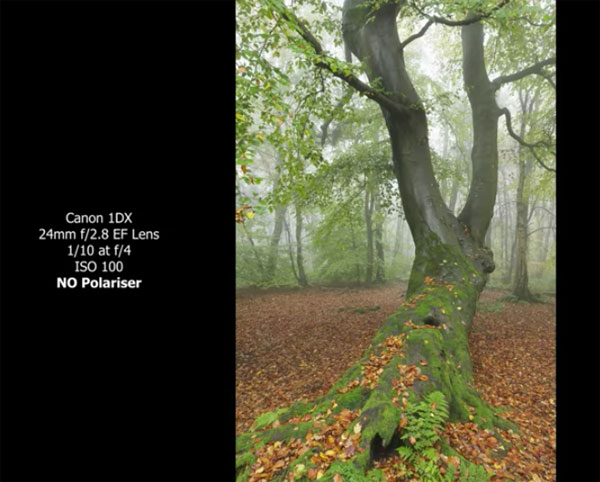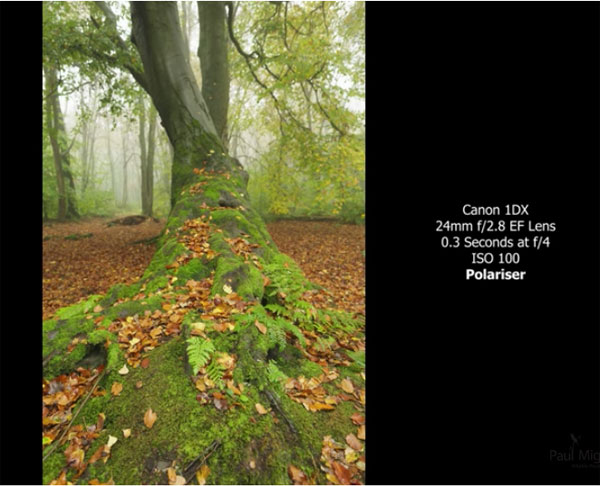When & When NOT to Use POLARIZERS for Landscapes (VIDEO)

Many landscape photographers never leave home without a polarizing filter, and consider this simple accessory almost mandatory for everything they do. But as you see in the eye-opening tutorial below, one pro says polarizers may detract from an image in certain situations—depending on the specific scene at hand and the mood you want to create.
In this behind the scenes episode from a British landscape pro, you’ll watch Paul Miguel shoot a variety of autumn images in the forest—some using a polarizer and others without. The results are quite different, and it’s a subjective decision as to which ones you like best.
As you probably know, a polarizing filter works its magic by increasing saturation, darkening pale blue skies, and removing reflections from non-metallic objects. All polarizers have a rotating mount, so it’s easy to achieve the effect you desire.

Another variable to keep in mind is that polarizers are more or less effective depending upon your position relative to the sun. Some polarizers simply thread onto the front of a lens, while others like the one used by Miguel, threads on to a special adapter that is first attached to the lens. In either case, the results are the same.
Before explaining how polarizers work, and the best way to harness their power, Miguel discusses several of his proven landscape photography techniques while setting up his shots. He has some great suggestions for improving composition, discusses how to nail exposure under various conditions, and reveals the key camera settings he employs.
Then Miguel makes several photos, with and without a polarizer, including captions with gear and exposure information on the images so you’ll know exactly what he did.

Our preference for his shots taken in the mist and fog, are the images without a polarizer, because of the soft, moody look. But we definitely like the vibrance provided by the polarizer in compositions that accentuate colorful fall leaves in the foreground. See what you think.
After watching the video head over to Miguel’s YouTube channel where you’ll find more great advice on both techniques and gear. We also suggest you check out the tutorial we posted recently from another accomplished shooter, explaining how to give landscape photos unique pastel tones with a quick Photoshop edit.














































